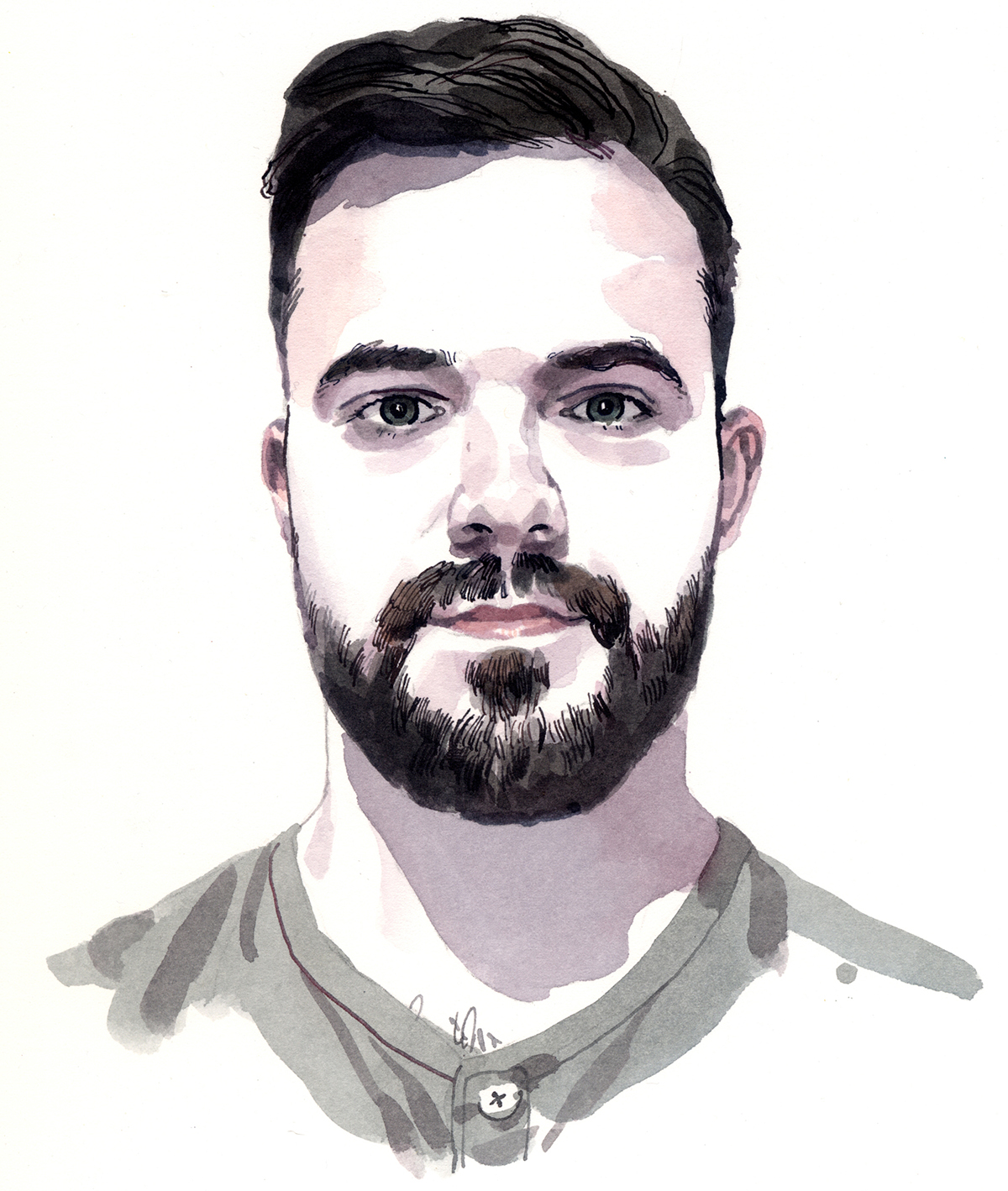Kristof Pota Manipulates Metals to Treat Alzheimer’s
The chemist also uses metals to better the contrast agent for MRIs.

Illustration by Matthew Cook
Kristof Pota Manipulates Metals to Treat Alzheimer’s
The chemist also uses metals to better the contrast agent for MRIs.
By entering chemistry competitions in elementary school, Kristof Pota long ago discovered that laboratory titrations and measurements are exciting work.
Chemistry is “the right balance of physics and biology because it has the rules,” the Hungary native said, “but it requires a different kind of creativity.”
In 2016, Pota came to TCU for 11 months of Fulbright-sponsored research working with Kayla Green, associate professor of chemistry, on a potential Alzheimer’s disease treatment. He returned to pursue a PhD.
“He has been an author on five papers with us already,” Green said of the fruitful collaboration. “Kristof gets science done and helps his colleagues do great science as well.”
All of Pota’s research projects are in the realm of coordination chemistry. He described the specialty in simple terms: “There is a metal ion, and there is an organic molecule called a ligand. And when they interact with each other, this interaction is called coordination.”
“Knowing how metal ions play a role in human health, by understanding coordination chemistry,” Green said, “is fundamental to making advances in medicine today.”
Alzheimer’s Research
In the Alzheimer’s research project, to which he still contributes, Pota is working with Green’s team on ways to capture free metal ions that can harm the brain.
“Kristof gets science done and helps his colleagues do great science as well.”
Kayla Green
The body naturally consists of metals, but most are locked in enzyme formations where they contribute to various bodily processes. If the enzyme breaks apart, the metal ion can escape, enter the bloodstream and make its way to the brain.
As a body ages, enzymatic malfunctions can happen more frequently and lead to an accumulation of metal ions in the brain. There, they associate with proteins called amyloid beta peptides and form plaques. Researchers are uncertain whether Alzheimer’s is a cause or an effect of the plaques, but they know these chemical structures are present in patients’ brains.
Pota is helping develop organic chemical structures that can be injected into the body to capture the free metal before it joins memory-harming plaques. The creative part, he said, “is making new molecules to try to explore what they are capable of in terms of metal binding.”
For potential Alzheimer’s patients, the chemicals could be used as a “pre-treatment,” he said, “to prevent those plaques from forming.”
MRI Safety
Pota estimated he spends about 40 percent of his research time on the Alzheimer’s-battling structures. He also continues work on a project he started in Hungary: improving MRI contrast agents to safeguard human health.
The pictures generated by magnetic resonance imaging machines are dependent upon metals to make organs light up. The metal-containing chemicals were a medical miracle when employed in the ’90s, he said, because they allowed “a picture of the tissues even without cutting the human body.”
The MRI chemicals were considered harmless until medical researchers later realized that some of the metals from the contrast agents, in rare cases, remained inside the body.
The metal traditionally used in imaging was gadolinium, which is injected in organic molecules that hold it like a basket. If the body doesn’t eliminate the basket in 15 to 20 hours, the gadolinium ions can break free and roam. When this happens, gadolinium replaces calcium in natural enzymes, causing thick skin lesions and signaling a potentially fatal disease called nephrogenic systemic fibrosis.
Pota is researching how to create baskets that hold manganese instead of gadolinium. “The human body,” he said, “has the processes to deal with free manganese ions.”
His synthetic experiments involve creating structures of organic molecules that can assist the manganese with its role as a safe and effective imaging agent.
Lab work is still fun, Pota said, but he doesn’t plan to continue either research project after finishing his doctoral studies. He wants to join the pharmaceutical industry and possibly pursue an MBA so he can manage teams of research chemists.
No matter where the professional road leads, Pota said his route will involve appreciation for research in chemistry — and the middle ground it occupies in the hard sciences. “I enjoy those systems, enjoy getting to know the framework and implementing those systems and making changes to the processes while still using those strict regulations. … I enjoy the control and the creativity kind of mixed together.”

Your comments are welcome
Comments
Related reading:
Features, Research + Discovery
Alessa Juarez Finds Responding to Mental Health Crises Requires Collaboration
De-escalating situations and improving services need an empathetic team approach.
Features, Research + Discovery
Cecilia Hill Brings Awareness of Mexican American History to Fort Worth Schools
Texas schools have an opportunity to embrace a culturally diverse history curriculum.